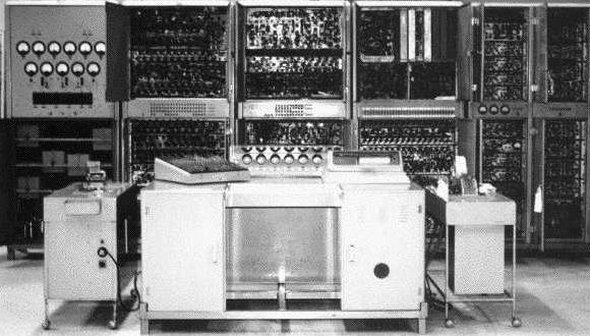The first generation and the era of commercial computing began in earnest in June 1951, when the U.S. Bureau of the Census purchased a computer called UNIVAC I. This machine was the brainchild of the pioneers of ENIAC, J. Presper Eckert and John Mauchly.
Having seen the great commercial potential of computers, they had formed their own company. In order to secure operating capital, they become a subsidiary of Remington-Rand which successfully marketed the computer under its own name.
The UNIVAC I differed from its predecessors in a very important respect: It was the first electronic computer manufactured by a business machine company specifically for business applications.
ADVERTISEMENTS:
Now a general-purpose machine was available for payroll processing and other routine, labor- intensive accounting work.
Different attributes of the First Generation computers are:
1. Vacuum lubes :
ADVERTISEMENTS:
The most important attribute of first-generation computers was the use of vacuum tubes, like those found in old radios and television sets, as the main logic element.
Though tubes were a vast improvement over electromechanical parts, like those in the Mark-I, they created many problems. They generated excessive heat, were large, and were prone to frequent failure.
Because of the heat the tubes generated, first-generation computers had to be cooled by extensive air-conditioning units. And because the tubes were large, first-generation computers were colossal.
2. Punched-Card Orientation :
ADVERTISEMENTS:
The punched card, used to process data since the 1800s, continued as the primary input/output medium for computer systems. Processing speeds for punched cards are notoriously slow compared with those for disk and tape, but the latter technologies did not mature until later generations.
3. Magnetic Drum Internal Memory :
Many computers of the first generation used rotating magnetic drums for internal memory. Programs and data could be read from punched cards and stored on the drum, along with intermediate computations and final results. Because drums contain moving parts, they are relatively slow by today s standards.
4. Limited Applications :
The typical commercial applications of the first generation were payroll, billing, and other accounting tasks. These applications- known as transaction processing applications, since they involve mainly the processing of business transactions- were very easy to “cost justify.”
For example, if a computer system could do the work of 20 clerks, each of whom earned $5,000 annually, a cost of $ 100,000 was a bargain. The system could pay back its purchase price in one year.
5. Programming in Machine and Assembly Languages :
The first programmers had to work in something called machine language. Machine-language instructions consist entirely of strings of Os and 1s (called bits). A machine-language statement might look like this:
01011000011100000000000010000010
Since a program might consist of hundreds of lines like this one, you can see that programming in machine language was difficult and that errors were frequent. Fortunately, other languages have since become available to spare people the awesome task of machine-language programming.
Dr. Grace Hopper at the University of Pennsylvania made the first breakthrough in 1952 when she produced an assembly language. Assembly languages made it possible to write instructions in shorthand form.
Although assembly- language programming represented a large improvement over machine- language coding, it is tedious by today’s standards and is best left to programming experts.

